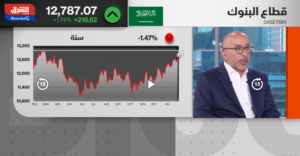Luxury home prices see some cooling off, but offices and mid-market properties push higher
According to latest data from Refinitiv, office prices in the US have fallen 16 per cent since their peak in March 2022.
Whilst the stress in the office space has been widely advertised – with predictions of further falls, as the investment required to renovate these assets is considerable – more surprising was that prices of multi-family apartment buildings are down 20 per cent from their peak a year ago. The broad explanation for this fall has been the rise in mortgage rates, but equal consideration has to be given to the extraordinary rise in the values of these assets in 2021-22 following the US’ Covid stimulus package.
As interest rates are likely to be higher for longer, there is a greater probability of further falls in asset prices. The average REIT prices in the US are trading at between 10-15 per cent discount to net asset values, reflecting such expectations. At the higher end of the property market, price drops have been even more dramatic on thin volumes in markets like Manhattan and San Francisco, with certain units trading up to 35 per cent below their last recorded transaction levels.
Watch the cashflow
In Dubai, the landscape could not be more different, with record transaction volumes continuing and moving in tandem with price rises, even as rents have started to normalize. Of course, it is natural to expect that for end-users with mortgages, there will be some softening of prices. At the developer level, for offplan launches, cashflow will continue to be the singular focus as collections will determine the delivery dates of such projects.
If past cycles market are any guide, then the actualization rates – the difference between expected and actual delivery of units launched – will be between 20-25 per cent. This may well be good news for those worried about an oversupply dynamic, but delays in a high interest rate scenario affect buyers who have taken mortgages on offplan purchases.
This indicates a change in sentiments, and certain recent developments in the real estate market do point to a further tightening of monetary conditions, as inflationary forces continue to linger for longer periods of time. Bid-ask spreads in the secondary residential markets have started to rise in certain segments, reflecting the need for higher yields demanded by investors against an inability to continue to raise rents.
Selective ‘mirroring’ of US market cycle
Does this mean that the fate of the markets will mirror to what is happening in the US?
The answer depends on the segment of the market being looked at. At the super-prime level, there is evidence of this being underway. In the mid-end residential as well as the office segment, the opposite is the case as supply shortages in the secondary markets continue to push prices higher.
In the final analysis, the issue will always be about liquidity conditions. Recent movements in the auction market indicate that there are parcels of land being made available as anticipated sales have not materialized. It is in the auction market that the bid-ask spreads can be accurately measured. And when transactions occur, an accurate picture starts to emerge.
This is as true for the land prices as well as it is for apartments and offices, and a recent increase in the volumes being transacted at the site indicates price moderation in an otherwise headline-dominated runaway market. Investors would be well advised to pay attention to these trends as they make their purchases, as these decisions affect their investment outlook.
What is evident is that while there is no decoupling from Western markets, there remains a correlation to price action activity in the West as well as higher interest rates. These factors suggest continued price moderation, especially in the primary market.
Sameer Lakhani
The writer is Managing Director at Global Capital Partners.





